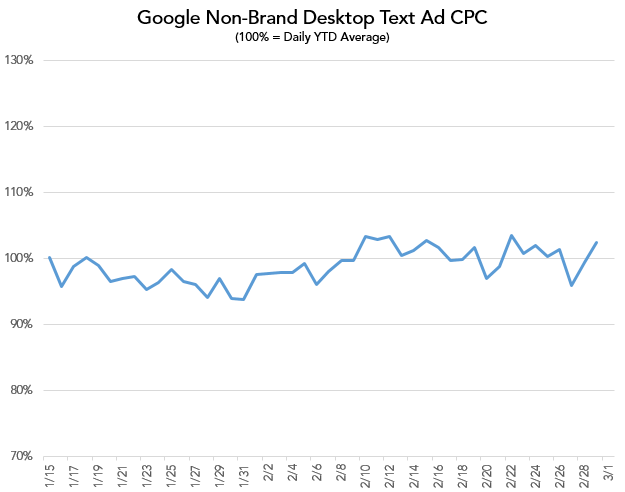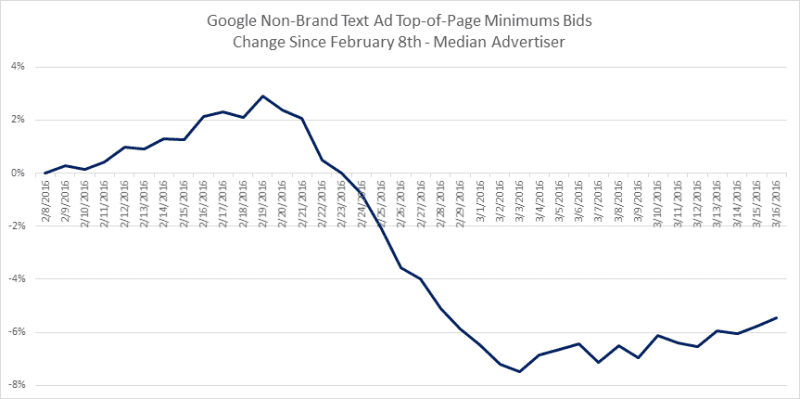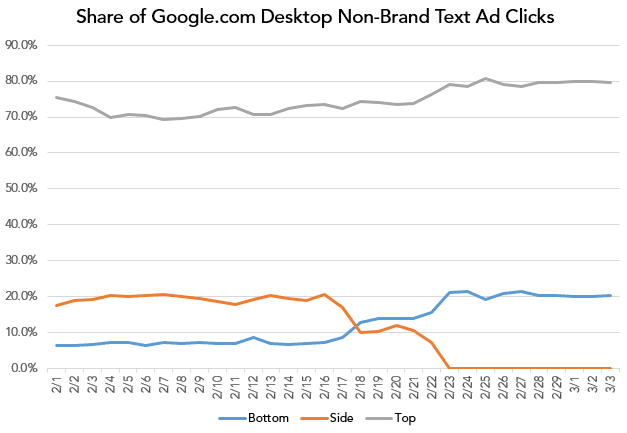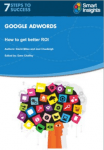The rationale behind this was to move the search results to be more aligned with the Mobile experience, removing the sidebar ads and replacing them with three (sometimes four, depending on the how commercial the query is) above-the-fold ads and three at the bottom of the SERP.
There were certainly a few eyebrows raised within the PPC and SEO industries, who questioned how this would impact their CPC and the organic listings. It was speculated by the PPC industry, that the cost of an AdWords campaign would increase, due to the principles of supply and demand as there is now only 6 or 7 ads, compared to the 11 ads displayed previously.
Expert Members Access - Google AdWords
Today, Paid Search Marketing is highly competitive in all sectors, so AdWords needs careful management to deliver a return-on-investment. Use our AdWords guide to step through the questions you need to ask to optimize your account.
Access the Google Ads
The Impact
Addressing the issue of an increase in the cost-per-click, it appears to have had very minimal impact, as highlighted in the graph below. You can see there have been fluctuations throughout the month, with the biggest drop in cost coming in at -5% whilst it is currently 2% up on where CPC was before the change. This "lack" of impact could be down to a number of factors, the most notable of which is that bottom ads are picking up a lot more traffic than expected, and is something we shall touch on later in the article.

Search Engine Land have conducted some research, which shows how the top-of-page minimum bid (I.e. the minimum bid you have to spend to get an ad above organice results) fell by around 6% since the fourth top-of-page ad was introduced, however has been on a steady incline since.

It's important to note that these are just estimates and will take time to fully update, but it indicates that advertisers are happy to increase their bids, to appear above the organic results, on ad's that were previously below.
Further analysis conducted by Merkle|RKG includes this chart, showing Google.com desktop non-brand traffic. It highlights the area where we would expect to see the biggest changes, with top-of-page ads now producing around 80% of text ad clicks, a 10 percent increase since removal of the sidebar ads.

Surprisingly, this leaves the bottom-of-page ads are picking up the clicks left by the right-hand side ads, producing the remaining 20%. The reason this is surprising, is that when I first heard about the update, it was assumed that the likelihood of users scrolling past all of the top-of-page and organic listings to then click on the bottom-of-page ads, was really rather slim. Meaning more clicks on the top-of-page ads and a mad scramble to outbid competitors for those top spots.
Evidently this isn't the case and the bottom-of-page ads have been holding their own, picking up the leftover traffic from the RHS ads.










